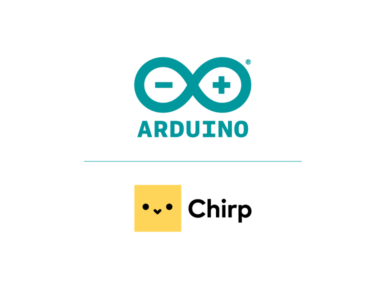
Overview
DYNAMIXEL Shield for Arduino MKR allows users to easily use ROBOTIS’ DYNAMIXEL Series along with Arduino MKR Boards.
The features are as follows:
- Compatible with Arduino MKR
- Compatible with ROBOTIS DYNAMIXEL TTL Series (Discontinued DYNAMIXEL may not be supported)
- For 12V DYNAMIXEL power supply, ROBOTIS SMPS 12V 5A PS-10 is recommended
- The included battery connector is compatible with ROBOTIS 3S Li-Po 11.1V batteries LB-010 or LB-020
- Only one JST DYNAMIXEL connector is assembled by default. Please solder included headers when necessary.
- JST DYNAMIXEL connector supports controlling individual servos and daisy-chains.
Parts list:
- DYNAMIXEL MKR Shield (1)
- JST(S3B-EH) (2)
- Molex(5268-02A) (2)
- DC Jack Harness (1)
- Battery Connector(SMW250-02) (1)
- XL-320 Convertible cable (1)
ROBOTIS provides Arduino libraries for DYNAMIXEL Shield to accelerate the development process using Arduino IDE.
Tech specs
| Compatibility | MKR Family |
| VIN(DXL) Voltage¹ | 3.5 ~ 24 [V] |
| Operating Temperature | -10 ~ +80 [°C] |
| Connectors | JST(S3B-EH), Molex(5268-02A) Battery Connector³ (SMW250-02) Terminal Block(DG350-3.5-02P-14) |
| Physical Connection | TTL Multidrop Bus (3.3V Logic, 5V Compatible) |
| Cables | - DC Jack Harness (Type A, O.D.: 5.5 [mm], I.D.: 2.5 [mm]) - Convertible cable for XL-320 |
| Dimensions | 65 x 25 [mm] |
| Weight | 11 [g] |
- ROBOTIS SMPS 12V 5A PS-10 is recommended for 12V DYNAMIXEL power supply.
- Only one JST is assembled by default. Please solder included connectors when necessary.
- The battery connector is compatible with ROBOTIS batteries LB-010 or LB-020.
Documentation
In order to use the AX or MX series TTL cable, solder the included molex connector to an empty DYNAMIXEL Port, or use the Robot Cable-X3P convertible cable.
Please be aware that Arduino MKR boards may limit the 5V power source for USB hardware protection.
More information about the DYNAMIXEL Shield for Arduino MKR Series can be found at the following links below.
Get Inspired
In this tutorial, you'll learn how to connect your Arduino MKR NB 1500 board securely to Microsoft Azure IoT Hub.

We are excited to announce a new partnership with Chirp, a London-based company on a mission to simplify connectivity using sound. Chirp’s machine-to-machine communications software enables any device with a loudspeaker or microphone to exchange data via inaudible sound waves. Starting today, our Chirp integration will allow Arduino-powered projects to send and receive data wirelessly over sound waves, using just microphones and loudspeakers. Thanks to some compatible libraries included in the official Arduino Library Manager and in the Arduino Create — as well as further comprehensive documentation, tutorials and technical support — it will be easy for anyone to add data-over-sound capabilities to their Arduino projects. Our new Nano 33 BLE Sense board, with a DSP-optimised Arm Cortex-M4 processor, will be the first board in the Arduino range with the power to transmit and receive Chirp audio signals leveraging the board's microphone as a receiver. From now on, the Chirp SDK for Arduino will support the following boards in send-only mode: Arduino MKR Zero, Arduino MKR Vidor 4000, Arduino MKR Fox 1200, Arduino MKR WAN 1300, Arduino MKR WiFi 1010, Arduino MKR GSM 1400, Arduino MKR NB 1500 and the Arduino Nano 33 IoT. Creative applications of Arduino and Chirp include, but certainly are not limited to: Triggering events from YouTube audioSecurely unlocking a smart lock with sound Sending Wi-Fi credentials to bring offline devices onto a Wi-Fi networkHaving a remote control that only interacts with the gadgets in the same room as you “Connectivity is a fundamental asset for our users, as the demands of IoT uptake require devices to communicate information seamlessly and with minimal impact for the end user. Chirp’s data-over-sound solution equips our boards with robust data transmission, helping us to deliver enhanced user experiences whilst increasing the capabilities of our hardware at scale,” said Massimo Banzi, Arduino co-founder.









